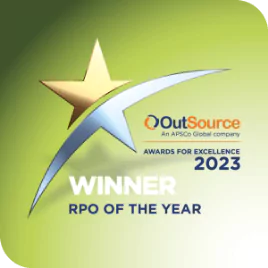Stephen Covey, the author of ‘7 Habits of Highly Effective People’, famously said, “Life is not accumulation, it is about contribution” and although that was published back in 1989, these words still resonate today. Many organisations talk about culture fit in their recruitment processes and prioritise those candidates in a selection process that they feel will fit into their existing workplace culture. However, recently the importance of cultural contribution – what individuals can actively bring to their roles – is challenging for prominence. Here, we look at what it is and how it can contribute to the success of an organisation.
What is cultural contribution?
Organisations, understandably, look for candidates who would be a good fit for both the organisation and the role. However, too frequently hiring managers are influenced by their unconscious biases which make them feel more inclined towards candidates that are more ‘like’ them or their existing team, and when asked to justify a decision to regret a candidate from a recruitment process will describe the ‘culture fit’ mismatch. Whilst it is prudent and valid to seek to ensure that candidates are able to operate effectively in a particular work environment, if you’re merely interested in hiring people who are exactly like you, in reality it can lead to stagnation, with fewer different perspectives or experiences contributing to problem solving and continuous improvements.
Cultural contribution turns the situation on its head and asks not whether the applicant will fit into the existing organisational culture, but rather what that individual can actively contribute towards the culture to enhance it, drive it forward and keep it current.
Equity, diversity & inclusion
One way to ensure cultural contribution is built into an organisation is to embrace diversity. Many organisations now put diversity at the heart of their recruitment policies and embrace the legal, moral and ethical case for Equity, Diversity and Inclusion (EDI). This broadly means rejecting discrimination on the grounds of a range of both legally protected characteristics such as age, ethnicity and gender and also unprotected characteristics such as: socioeconomic background, educational attainment and traits such as introversion or extraversion, and welcoming individuals who can help increase the diversity of thought and experience in the organisation.
The benefits for both organisations and the individuals who take a cultural contribution approach are many. The CIPD (Chartered Institute of Personnel and Development) makes the case that EDI has a positive psychological effect on employees, making them feel valued and respected. As a result, better quality work is produced, creativity levels are higher, and employees experience an overall sense of improved mental and physical wellbeing.
For employers, successful ED&I policies give organisations a competitive advantage. Open and inclusive workplaces have been seen have better retention rates and have demonstrated increased levels of innovation. By creating a diverse and inclusive workplace, you are not only making the environment more accessible to a wider pool of talent, but you are consistently bringing in fresh perspectives to elevate your workforce.
Disruptive thinking
In a highly viewed TED Talk entitled ‘Are you a giver or a taker?’, Organisational Psychologist Adam Grant breaks down workplace personalities into three types: Givers, Takers and Matchers. He says, “…research shows that the frequency of giving behaviour that exists in a team or organisation, and the more often people help and share their knowledge… the better organisations do on every metric we can measure, [resulting in] higher profits, employee retention and lower operating costs.” He finishes his talk by affirming, “success is about contribution.“
Cultural contribution can be likened to challenging the status quo, with the aim of supporting the evolution of an organisation, pushing it in areas that it might not have previously considered, and driving change for the betterment of not only the company but also its workforce.
For candidates, it’s about offering potential employers something they don’t currently have. For organisations and hiring managers it’s about actively encouraging and advocating for diversity of thought, experience and style. Cultural contribution shouldn’t be seen as simply a box-ticking exercise, but rather, embraced as a real chance to bring a fresh set of eyes to the workplace, and thus further skills and ideas as a result. It requires both awareness and insight on the part of employers to bring in individuals who can broaden the perspective of the organisation or of a specific team. Today’s workplaces are evolving into spaces where values and ethics are seen to be key drivers of performance and results, but it’s important that this doesn’t result in an introspective monoculture of groupthink, where nothing is challenged, and few new ideas are presented. Diverse input is vital to innovation and growth, both for organisations and for the individuals who work within them.
One way to introduce cultural contribution in the workplace is for employers to rethink the hiring process, by ensuring that the candidate attraction and assessment processes are truly inclusive and result in hires that bring with them new and diverse perspectives.
Omni’s Resourcing Effectiveness Assessment, which benchmarks an organisation’s effectiveness against 16 key resourcing areas, specifically considers how inclusive processes are (attraction and selection) and considers how the employer brand and candidate experience can be optimised for inclusion. Here at Omni, we change the way organisations resource for the better, as well as offering outsourced recruitment services.
Get in touch today to find out how we can help to ensure culture contribution is a part of your future hiring process.









